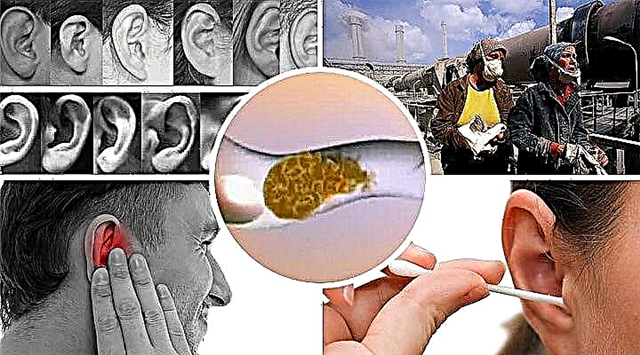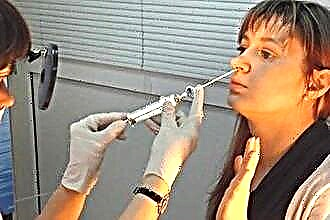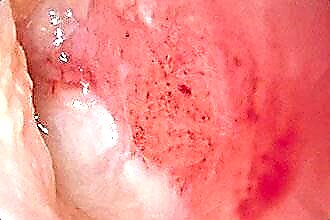Many people have encountered such an unpleasant problem as sulfur plugs in their ears. They dull hearing and cause a foreign body sensation in the ear. This prompts the person to try to clear the ear with the help of improvised objects. Often matches, pins and other pointed objects are used. In this case, a person is usually well aware that introducing such objects into the ear is fraught with a puncture of the eardrum. This is why most people use cotton swabs. This is also not the best solution - a cotton swab pushes the wax deep into the ear canal and compresses it, which ultimately leads to an aggravation of the problem. In addition, frequent irritation of the ear skin causes hypersecretion of the sulfur mass.
How to get rid of sulfuric plug, and at the same time not harm your own health?
Experts believe that removing sulfur plugs with hydrogen peroxide is one of the safest methods for cleansing your ears. It can be used for both adults and children.
In this article, we will describe in detail how to remove sulfur plug with hydrogen peroxide at home.
How are traffic jams formed?

Normally, the sulfur formed in the ear canal gradually moves to its outer edge. This forms a brown ring, which is noticeable when examining the ear. It is necessary to remove this part of the sulfur, while not penetrating into the deeper parts of the ear canal. It can be easily washed off with soap and water.
When the amount of sulfur in the ear exceeds the norm, there is a risk of the formation of a plug - a dense accumulation of sulfur mass, dust particles, skin flakes, etc. It is much more difficult to wash it than sulfur, and a person is faced with a lot of troubles associated with it - a feeling of congestion, the presence of a foreign body in the ear canal and a decrease in hearing acuity.
What are the causes of the formation of sulfur plugs? Let's list the main ones:
- Genetic features. Indeed, some people from birth suffer from profuse excretion of sulfur. The width and degree of tortuosity of the ear canal also plays a role - if it is narrow and twisted, self-cleaning is less effective.
- Excessive ear cleansing. Normally, the skin of the ear should be moisturized with the secretion of the sulfur glands (just like the skin of the body is constantly moisturized with the secretion of the sebaceous glands). If you wash off its layer daily, the glands activate the work, as a result of which the sulfur will become more and more.
- Using cotton swabs. Penetrating into the ear canal, a person pushes the sulfur from its edges into the depths and compresses it tightly, which significantly complicates the ear's self-cleaning.
- Living or working in dusty environments.
- Transfer of ear disease. For example, during otitis media, sulfur is released in larger quantities than usual. Also, increased production of sulfur provokes the ingress of a foreign body into the ear canal. In people with psoriasis or eczema, plugs appear as a result of constant flaking of the skin.

Cork removal instructions
Hydrogen peroxide from earwax plugs can be used at home. The procedure can be carried out on your own, but it is better for someone close to help you.
You will need:
- H2O2 solution 3%;
- paper napkins;
- pipette.
The method is pretty simple:
- Take a lying position, turn your head so that the disturbing ear is on top.
- Place a few drops of peroxide in the ear canal (use a pipette). Pre-warm the pipette in the palms of your hands so that the liquid reaches body temperature.
- After instillation, you will feel a hiss and a slight tingling sensation - this is how it should be.
- If the procedure does not cause pain or other discomfort, lie in this position for 15 minutes.
- At the end of the procedure, remove the fragments of the dissolved sulfur plug with a paper napkin; If any liquid remains in your ear, gently wipe it off with a cotton swab.
If the procedure causes you pain, a strong burning sensation in the ear, etc., wash off the peroxide with water, wipe off with a tissue and see a doctor. Unpleasant sensations when flushing are often indicative of ear problems.
Sulfur plug under the influence of hydrogen peroxide does not always dissolve in one procedure. Often, for its complete dissolution, a course of washing is required (twice a day for 3-5 days).
There is also a way to flush out the ear plug with hydrogen peroxide using a syringe. The liquid is injected into the ear under strong pressure and the wax is flushed out of the ear. However, most doctors do not recommend this method - a strong pressure of liquid can cause a pressure drop on the eardrum, peroxide leakage into the deep parts of the ear canal and other unpleasant consequences.
recommend this method - a strong pressure of liquid can cause a pressure drop on the eardrum, peroxide leakage into the deep parts of the ear canal and other unpleasant consequences.
Removing plugs in infants
In infants, sulfur is produced in large quantities, but normally it moves to the edge of the ear canal, and its removal is limited to washing the outer ear. If the wax blocks the auditory canal, its self-removal is impossible. The child may develop coughing, nausea, hearing loss.
If you suspect the presence of excessive sulfur, the child should be shown to the ENT. He will determine if it needs to be removed and which method of cleaning is more preferable. Usually, so-called cerumenolytics are used for infants - preparations for dissolving sulfur. They act like peroxide from ear plugs, but are more effective and safer. Before the invention of cerumenolytics, doctors also used hydrogen peroxide. However, in children, peroxide sometimes causes chemical burns. If you want to use this method, dilute the peroxide with water in a 1: 1 ratio.
Prophylaxis
To prevent the formation of plugs, it is necessary to monitor the hygiene of the ears. At the same time, it is important to know when to stop and not to abuse the means for cleansing from sulfur - remember that this can have the opposite effect.
For daily care, it is enough to rinse your ears with warm water and soap. After that, wipe the ear with a soft towel or napkin. Cotton swabs, which are often called "ear swabs" for cleaning the ears, are not suitable at all.
If you feel wax has accumulated in the deeper part of the ear, do not try to reach it with objects. Even cleansing with cotton is not as harmless as it seems - the fibers of the cotton stick to the sulfur mass, as a result of which the formation of the plug is accelerated.
You can also use hydrogen peroxide by pouring it into your ear to cleanse the deeper parts of your ear canal. It is a good preventive measure against traffic jams.
Regularly flushing your ears with peroxide will help prevent the formation of wax plugs. However, do not abuse this agent - peroxide acts like an alkali, and with frequent use it can cause burns, skin irritation, and, as a result, sulfur hypersecretion.



